Atheism Statistics
 From Conservapedia
From Conservapedia 
Atheism has a number of effects on individuals and on societies.
Below is a collection of atheism statistics which cover a number of areas relative to atheism:
It is estimated that in the past 100 years, governments under the banner of atheistic communism have caused the death of somewhere between 40,472,000 and 259,432,000 human lives.[2] Dr. R. J. Rummel, professor emeritus of political science at the University of Hawaii, is the scholar who first coined the term democide (death by government). Dr. R. J. Rummel's mid estimate regarding the loss of life due to communism is that communism caused the death of approximately 110,286,000 people between 1917 and 1987.[3] See: Atheism and mass murder and Atheism and communism
Theodore Beale notes concerning atheism and mass murder:
| “ | Apparently it was just an amazing coincidence that every Communist of historical note publicly declared his atheism … .there have been twenty-eight countries in world history that can be confirmed to have been ruled by regimes with avowed atheists at the helm … These twenty-eight historical regimes have been ruled by eighty-nine atheists, of whom more than half have engaged in democidal acts of the sort committed by Stalin and Mao …
The total body count for the ninety years between 1917 and 2007 is approximately 148 million dead at the bloody hands of fifty-two atheists, three times more than all the human beings killed by war, civil war, and individual crime in the entire twentieth century combined. The historical record of collective atheism is thus 182,716 times worse on an annual basis than Christianity’s worst and most infamous misdeed, the Spanish Inquisition. It is not only Stalin and Mao who were so murderously inclined, they were merely the worst of the whole Hell-bound lot. For every Pol Pot whose infamous name is still spoken with horror today, there was a Mengistu, a Bierut, and a Choibalsan, godless men whose names are now forgotten everywhere but in the lands they once ruled with a red hand. Is a 58 percent chance that an atheist leader will murder a noticeable percentage of the population over which he rules sufficient evidence that atheism does, in fact, provide a systematic influence to do bad things? If that is not deemed to be conclusive, how about the fact that the average atheist crime against humanity is 18.3 million percent worse than the very worst depredation committed by Christians, even though atheists have had less than one-twentieth the number of opportunities with which to commit them. If one considers the statistically significant size of the historical atheist set and contrasts it with the fact that not one in a thousand religious leaders have committed similarly large-scale atrocities, it is impossible to conclude otherwise, even if we do not yet understand exactly why this should be the case. Once might be an accident, even twice could be coincidence, but fifty-two incidents in ninety years reeks of causation![4][5] |
” |
See also:
- Atheism and mass murder
- Militant atheism
- Atheism and violence
- Soviet atheism
- Atheism and Karl Marx
- Religion and Atheism in North Korea
- History of atheism
Contents
- 1 Global atheism statistics
- 1.1 Decline of global atheism statistics
- 1.2 Global atheism and aging populations
- 2 Demographics of atheism
- 3 Atheism/religion and death anxiety statistics
- 3.1 A United States study indicated that very religious people fear death the least
- 3.2 Lukewarm/moderately religious and death anxiety
- 3.3 Irreligion's effect on death anxiety
- 3.3.1 Wink and Scott study: Irreligious and death anxiety
- 3.3.2 Atheists and belief in life after death
- 4 Atheism and lower charitableness/empathy statistics
- 4.1 Atheism and lower empathy for others
- 4.2 Atheist fundraising vs. religious fundraising statistics
- 5 Atheism and marriage/domestic violence statistics
- 5.1 Irreligion and domestic violence
- 5.2 Atheism and divorce statistics
- 6 Atheism and gender
- 7 Atheism and sexuality
- 7.1 Atheism and fertility rate statistics
- 8 Mass rape of German women by the Soviet army
- 9 British study finds atheists and scientists to be the least enthusiastic about Valentine's Day
- 10 Atheism, Christianity and romance books: Amazon statistics
- 11 Western atheism and race statistics
- 11.1 Expected racial demographic changes in the Western World
- 12 Atheism and diversity
- 13 Studies related to atheism and immorality
- 13.1 Atheism and morality studies
- 13.2 Atheism and psychopathy
- 13.2.1 Barna Group study on behavior of atheists vs. evangelical Christians
- 13.2.2 Barna Group study related to atheist beliefs about behaviors
- 13.2.3 University study: Public perception of atheist morality
- 13.3 Atheism and care of the environment statistics
- 14 Atheism and child pornography/prostitution statistics
- 14.1 Atheistic Denmark and child pornography
- 14.2 Nontheistic Thailand and child prostitution
- 14.3 Netherlands and child pornography
- 14.4 Irreligious Britain and child pornography
- 14.5 Atheistic Czech Republic and child pornography/molestation
- 15 Atheism and its retention rate in individuals
- 16 Atheism and evangelism statistic
- 17 Atheism and alcoholism
- 17.1 Secular countries/regions and alcoholism
- 17.2 Atheism, alcoholism and anger
- 17.3 Irreligion, alcoholism and various generations in the United States
- 18 Atheism and illegal drug use and drug addiction
- 18.1 Additional statistics on religion/irreligion and drug use
- 19 Atheism and loss of economic productivity statistics
- 19.1 Sloth in atheistic communist countries vs. Protestant work ethic
- 19.2 Secular Europe's economic crisis
- 19.3 Economic and societal deterioration in secular Sweden
- 20 An examination of atheism and anger/arrogance
- 20.1 Atheism and anger
- 20.2 Atheism and arrogance
- 21 Atheism and mental health statistics
- 21.1 Atheism and loneliness
- 21.2 Indian anthropologist's commentary on lonelineness in atheistic Denmark
- 22 Secular/religious countries and statistical trends related to intelligence
- 23 Atheism/theism and educational statistics
- 24 Atheism and profanity
- 25 Atheism and the media
- 26 Views on atheists statistics
- 26.1 Hate crimes in the United States against atheists/agnostics are very low in number
- 26.2 Atheism vs. Islam and atheist persecution
- 26.2.1 Ex-Muslim atheists are becoming more outspoken, but Muslim tolerance is still rare
- 27 Atheism and politics
- 28 Irreligion and criminality statistics
- 28.1 Irreligious prison population
- 28.2 Atheist prison statistics
- 28.2.1 Atheism and theft crime statistics
- 29 Atheism and repressive prisons statistics
- 30 Atheism vs. Christianity statistics
- 31 Internet atheism statistics
- 31.1 Google trends - Atheism and agnosticism terms
- 31.2 Richard Dawkins' website statistics
- 31.3 Post sexual harassment allegations against Lawrence Krauss and David Silverman, searches for atheism related topics have dropped markedly
- 32 Atheist PZ Myers says atheists are largely a population of internet nerds and geeks
- 33 Irreligion and superstition/pseudoscience
- 34 Atheism and science statistics
- 34.1 Atheism and the Scientific Revolution statistic
- 34.2 Atheism and the scientific community statistics
- 34.3 Atheists and the National Academy of Sciences
- 35 Atheism and purpose
- 36 Additional irreligion and health statistics
- 37 Dietary practices of atheists statistics
- 38 Statistics about the collapse of atheism in the area of the former Soviet Union
- 38.1 20th century atheism and Soviet/Chinese Communism
- 38.2 Failure of Soviet Union state atheism statistics
- 39 Atheist music statistics
- 40 Atheism and art statistics
- 40.1 Atheists generally apathetic about atheist art
- 40.2 Atheist art commonly employs mockery and/or ugliness
- 41 Atheism and cultural statistics
- 41.1 Atheism and poetry statistics
- 41.2 Atheism and art/music
- 41.3 Atheism and animal abuse statistics
- 41.4 USA states: Religion/irreligion and percentage of dog owners
- 41.4.1 USA: 9 out 10 of states with the highest percentage of dog owners are in Protestant dominated regions
- 41.4.2 None of the least religious states are among the top 10 states in dog ownership
- 42 American atheists and church attendance
- 43 Atheist lawsuit statistics
- 44 Conservapedia atheism articles statistics
- 45 See also
- 46 External links
- 47 Notes
Global atheism statistics[edit]
See also: Global atheism and Global atheism statistics and Atheism vs. Christianity and Global Christianity
The atheist population mostly resides in East Asia (particularly China) and in secular Europe/Australia primarily among whites.[6] See: Asian atheism and European desecularization in the 21st century and Western atheism and race
Decline of global atheism statistics[edit]
See also: Global atheism statistics and Desecularization
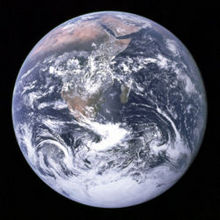
The number of atheists in the world is expected to drop before mid-2022 according to the scholars at the Center for the Study of Global Christianity at Gordon-Conwell Theological Seminary.[8]
According to the Encyclopædia Britannica, 2% of the world's population self-identifies as atheist and the average annual global change for atheism from 2000 to 2010 was −0.17%.[9]
A survey published in the 2005 Encyclopedia Britannica stated that 2.3% of the world's population consists of individuals who profess "atheism, skepticism, disbelief, or irreligion, including the militantly antireligious."[10] In respect to the 2.3% figure just mentioned, the 2005 survey cited by Encyclopedia Britannica survey did not include Buddhist in regards to the 2.3% figure and Buddhism can be theistic or atheistic.[10][11] See also: Atheist Population.
On July 24, 2013, CNS News reported: "Atheism is in decline worldwide, with the number of atheists falling from 4.5% of the world’s population in 1970 to 2.0% in 2010 and projected to drop to 1.8% by 2020, according to a new report by the Center for the Study of Global Christianity at Gordon-Conwell Theological Seminary in South Hamilton, Mass."[12]
As a percentage of the world's population, atheism peaked in 1970.[13] Global atheism is expected to decline in the 21st century and beyond in terms of its global market share.[14]
On December 23, 2012, Professor Eric Kaufmann who teaches at Birbeck College, University of London wrote:
| “ | I argue that 97% of the world's population growth is taking place in the developing world, where 95% of people are religious.
On the other hand, the secular West and East Asia has very low fertility and a rapidly aging population... In the coming decades, the developed world's demand for workers to pay its pensions and work in its service sector will soar alongside the booming supply of young people in the third world. Ergo, we can expect significant immigration to the secular West which will import religious revival on the back of ethnic change. In addition, those with religious beliefs tend to have higher birth rates than the secular population, with fundamentalists having far larger families. The epicentre of these trends will be in immigration gateway cities like New York (a third white), Amsterdam (half Dutch), Los Angeles (28% white), and London, 45% white British. [15] |
” |
Global atheism and aging populations[edit]
See also: Global atheism and aging populations
Global atheism is facing significant challenges in terms of aging populations in East Asia and Europe and this will be a significant cause of desecularization in the 21st century (see: Global atheism and aging populations).
Demographics of atheism[edit]
Demography is the study of human populations, and is a major specialty in the disciplines of sociology, economics, history, geography, statistics and epidemiology.
See: Demographics of atheism and Atheism, race and gender and Atheists and income
Atheism/religion and death anxiety statistics[edit]
See also: Atheism and death and Atheism and death anxiety and Atheism and cowardice
A United States study indicated that very religious people fear death the least[edit]

According to a study performed in the United States by researchers Wink and Scott, it was found that very religious people feared death the least.[16][17] In addition, the researcher Wen found that the more religious you are, the less you will fear death.[18]
King Solomon declared in the Book Of Proverbs: "The wicked flee when no one is pursuing, But the righteous are bold as a lion." (Proverbs 28:1).
The Apostle Paul wrote: ""O death, where is your victory? O death, where is your sting? The sting of death is sin, and the power of sin is the law; but thanks be to God, who gives us the victory through our Lord Jesus Christ" (1 Corinthians 15:55-56).
Lukewarm/moderately religious and death anxiety[edit]
In the aforementioned study, Wink and Scott found that moderately religious people fear death the most.[16][17]
In the Book of Revelation, Jesus Christ told the Church of Laodicea that He would spit lukewarm members of the church out of this mouth and that they needed to repent and become fervent/hot Christians (Revelation 3:15–16). Lukewarm believers in God are thought to have the fear of hell, but not the inward assurance of going to heaven.[16]
Irreligion's effect on death anxiety[edit]
See also: Atheism and death and There Are No Atheists In Foxholes
The Bible teaches that "There is a way which seems right to a man, But its end is the way of death." (Proverbs 14:12). Furthermore, the Bible teaches "Trust in the Lord with all your heart And do not lean on your own understanding." (Proverbs 3:5). Also, Scripture teaches that The fear of the Lord is the beginning of wisdom, And the knowledge of the Holy One is understanding." (Proverbs 9:10). The psalmist David declared: "The fool has said in his heart, 'There is no God.' They are corrupt, they have done abominable works, there is none that doeth good." — Psalms 14:1 (KJV) See: Atheism and arrogance and Atheism and morality and Atheism and moral intelligence
Wink and Scott study: Irreligious and death anxiety[edit]
According to the researchers Wink and Scott, the irreligious fear death more than the very religious, but fear it less than the lukewarm/moderately religious. Atheists lack the God given courage of Christians with a strong faith, but many are too foolish and arrogant to have enough sense to fear hell.
Atheists and belief in life after death[edit]
See also: Atheists and supernatural beliefs

The website the Skeptics Guide indicates that a significant number of atheists and agnostics believe in life after death and the website reported:
| “ | A survey compiled in 2014 by The Austin Institute for the Study of Family and Culture (AISFC) reveals that 32 percent of Americans who identified themselves as agnostics and atheists believe in an afterlife of some kind. In addition, 6 percent of the same non-theistic group expressed a belief in a “bodily resurrection”. These numbers were taken from a sample of 15,738 Americans, all of which were between the ages of 18 and 60. According to the data, 13.2 percent of Americans identify themselves as atheist, agnostic, or some other variation of non-believing.
I found these results to be quite surprising. Having been immersed in circles of atheists and agnostics for the past 20 years, the numbers revealed by this study are higher than I would have guessed, by quite a lot. What stands out the most is that 6% expressed a belief in resurrection. It could be a statistical anomaly of some sort (perhaps the respondents did not understand the question about bodily resurrection?) Why an atheist or agnostic would believe that a dead person could come back to life seems entirely contrary to their worldview.[20] |
” |
(Study, Austin Institute for the Study of Family and Culture: Do people still believe in life after death?)
In addition, there are atheists who have a fear of Hell (see: Atheism and the fear of Hell).
Atheism and lower charitableness/empathy statistics[edit]
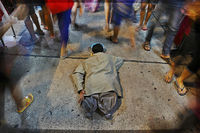
A beggar in Cambodia. In Cambodia, the vast majority of the population adheres to a nontheistic form of Buddhism called the Theravada school of Buddhism.
Per capita atheists and agnostics in America give significantly less to charity than theists even when church giving is not counted for theists. See: Atheism and uncharitableness
See also: Atheism and uncharitableness and Atheism and love
Concerning the issue of atheism and charity, charitable giving by atheists and agnostics in America is significantly less than by theists, according to a study by the Barna Group:
| “ | The typical no-faith American donated just $200 in 2006, which is more than seven times less than the amount contributed by the prototypical active-faith adult ($1500). Even when church-based giving is subtracted from the equation, active-faith adults donated twice as many dollars last year as did atheists and agnostics. In fact, while just 7% of active-faith adults failed to contribute any personal funds in 2006, that compares with 22% among the no-faith adults.[21] | ” |
A comprehensive study by Harvard University professor Robert Putnam found that religious people are more charitable than their irreligious counterparts.[22] The study revealed that forty percent of worship service attending Americans volunteer regularly to help the poor and elderly as opposed to 15% of Americans who never attend services.[22] Moreover, religious individuals are more likely than non-religious individuals to volunteer for school and youth programs (36% vs. 15%), a neighborhood or civic group (26% vs. 13%), and for health care (21% vs. 13%).[23][24]
Arthur C. Brooks wrote in Policy Review regarding data collected in the Social Capital Community Benchmark Survey (SCCBS) (data collected by in 2000 by researchers at universities throughout the United States and the Roper Center for Public Opinion Research):
| “ | The differences in charity between secular and religious people are dramatic. Religious people are 25 percentage points more likely than secularists to donate money (91 percent to 66 percent) and 23 points more likely to volunteer time (67 percent to 44 percent). And, consistent with the findings of other writers, these data show that practicing a religion is more important than the actual religion itself in predicting charitable behavior. For example, among those who attend worship services regularly, 92 percent of Protestants give charitably, compared with 91 percent of Catholics, 91 percent of Jews, and 89 percent from other religions.[25] | ” |

ABC News reported:
| “ | ...the single biggest predictor of whether someone will be charitable is their religious participation.
Religious people are more likely to give to charity, and when they give, they give more money: four times as much. And Arthur Brooks told me that giving goes beyond their own religious organization: "Actually, the truth is that they're giving to more than their churches," he says. "The religious Americans are more likely to give to every kind of cause and charity, including explicitly non-religious charities."[27] |
” |
Atheism and lower empathy for others[edit]
See also: Atheism and love and Atheism and sadism and Atheism and mass murder
In 2007 the Baptist Press reported:
| “ | ...a pollster at the University of Lethbridge in Alberta, Canada, found that adults who profess a belief in God are significantly more likely than atheists to say that forgiveness, patience, generosity and a concern for others are "very important." In fact, the poll found that on 11 of 12 values, there was a double-digit gap between theists and atheists, with theists more likely to label each value "very important."
The survey by sociologist and pollster Reginald Bibby examined the beliefs of 1,600 Canadians, 82 percent who said they believed in "God or a higher power" and 18 percent who said they did not.[28] |
” |
Atheist fundraising vs. religious fundraising statistics[edit]
See: Atheist fundraising vs. religious fundraising
Atheism and marriage/domestic violence statistics[edit]
See also: Atheism and marriage and Atheist marriages
The Christian apologist Michael Caputo wrote: "Recently the Pew Forum on Religion and Public Life has published its mammoth study on Religion in America based on 35,000 interviews... According to the Pew Forum a whopping 37% of atheists never marry as opposed to 19% of the American population, 17% of Protestants and 17% of Catholics."[29] See: Atheism and marriage
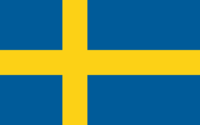
According to the 2001 American Religious Identification Survey (ARIS) over 50% of all atheists and agnostics don’t get married.[32] The fertility rate is significantly lower in the atheist population (see: Atheism and fertility rates).
Irreligion and domestic violence[edit]
See also: Irreligion and domestic violence and Atheism and violence
The irreligious have a higher rate of domestic violence (See: Irreligion and domestic violence). In addition, some of Europe's most secular countries have significant problems with domestic violence (see: Secular Europe and domestic violence).
For example, Sweden is one of the most atheistic countries in the world.[30] In Sweden, 81 percent of women said they had been harassed at some point after the age of 15 - compared to the EU average of 55 percent.[31] See also: Atheistic Sweden and rape
Research indicates that atheists are more likely to see illegal drug use and couple cohabitation before marriage as being morally acceptable.[33] A higher rate of domestic violence exists among cohabiting couples as compared with married couples[34] As noted above, atheists have lower marriage rates than theists (see: Atheism and marriage and Atheist marriages). According to the World Health Organization, "Interpersonal violence and illicit drug use are major public health challenges that are strongly linked."[35]
Atheism and divorce statistics[edit]
See also: Atheism and divorce
As as atheism and divorce, the social researcher and author Shaunti Feldhahn found that those who attend church regularly have a significantly lower divorce rate than those who don’t.[36][37] Feldhahn conducted eight years of research on divorce statistics and examined U.S. Census data, data from various university centers and relevant books/journals.[38] In addition, Feldhahn interviewed social science researchers about their methodology and to confirm various quotes.[39]
Furthermore, the Christian apologist Ken Ammi wrote in his atheism article at Creation Ministries International:
| “ | “According to Barna, ‘Forty-two percent of adults who associate with a faith other than Christianity had co-habited, while atheists were the most likely to do so (51%).
“It is critical to stress that it is a well known fact that cohabiters experience a very high number of ‘breakups’ before getting married. ‘Millions of people … believe that cohabitation is a prelude to marriage. And for many, it is. However, Smock reports that 45% of cohabitations break up with no marriage. Another 10% continue cohabiting.’ “Barna did not include this enlightening fact in his research. Thus, if 21% of atheists divorce after marriage, and 45 % break up once or more before marriage, what we have is the astounding rate of about 66% of atheist couples experiencing ‘at least’ one break up. If, however, the number is 37%, then we have a shocking figure of 82% … “What needs mentioning is the fact that many atheists do not cohabit as a prelude to marriage. They in fact see cohabitation as ‘equivalent’ to any marriage relationship … These break ups were not included in the Barna research … “The appellation ‘Christian’ a Christian does not make. There are great numbers of people in this world who call themselves ‘Christians’ but have never internalized the teachings of Jesus Christ." … [40] |
” |
Atheism and gender[edit]
See also: Atheist women statistics and Atheism and women and Irreligion and domestic violence and Secular Europe and domestic violence and Atheism and rape and Atheism and sexism

In November 2010, Discover Magazine published survey results published by the World Values Survey which showed significant differences between the percentage of men and women who are atheists for various countries with men outnumbering women in terms of adopting an atheist worldview.[43]
A 2009 article in LiveScience.com entitled Women More Religious Than Men reported: "A new analysis of survey data finds women pray more often then men, are more likely to believe in God, and are more religious than men in a variety of other ways...The latest findings, released Friday, are no surprise, only confirming what other studies have found for decades.[44]
In 2007, the Pew Research Center found that American women were more religious than American men.[42] See: Atheism and women and Irreligion and domestic violence
In June of 2010, the atheist PZ Myers commented that atheist meetings tend to be significantly more attended by males.[45] In October of 2012, the atheist Susan Jacoby wrote in The Humanist concerning atheist meetings: "When I speak before non-college audiences — that is, audiences in which no one is required to be there to get credit for a college course — 75 percent of the people in the seats are men."[46]
For more information, please see: Atheism and women
Atheism and sexuality[edit]
See also: Atheism and sexuality

Research shows that religious women (especially evangelical/low church Protestant women) are more sexually satisfied than irreligious women.[48][49][50]
A social science study also reports that Hispanic men are more sexually satisfied than other ethnic groups in the United States.[51] Hispanics are known for their religiosity. For example, in 2015, BloombergView reported concerning the United States: "According to a much-discussed 2012 report from the Pew Research Center on Religion and Public Life, only 3 percent of U.S. atheists and agnostics are black, 6 percent are Hispanic, and 4 percent are Asian. Some 82 percent are white. (The relevant figures for the population at large at the time of the survey were 66 percent white, 11 percent black, 15 percent Hispanic, 5 percent Asian.)"[52] See also: Western atheism and race
In 2011, The Daily Beast conceded in an article entitled Why Are Christians Having Better Sex Than the Rest of Us?, "The devout are actually having better sex than the rest of us."[49]
In the United States, the Republican Party has a large segment of religious conservatives and they are influential within the party.[53] ABC News reported that "More Republicans Satisfied With Sex Lives Than Democrats".[54]
As a group, atheists have sub-replacement levels of fertility.[55]
Atheism and fertility rate statistics[edit]
- Atheism and fertility rate statistics
Mass rape of German women by the Soviet army[edit]

See also: Mass rape of German women by the Soviet army
The Soviet Union practiced state atheism and militant atheism. According to the University of Cambridge, historically, the "most notable spread of atheism was achieved through the success of the 1917 Russian Revolution, which brought the Marxist-Leninists to power."[57] See also: Atheism and communism and Soviet atheism
The journalist Peter Hitchens is the ex-atheist brother of atheist Christopher Hitchens and he covered the Soviet Union during its latter years before it collapsed. According to Peter Hitchens, an atheistic society degraded the morals of the Russian people during the Soviet period (see: Soviet Union and morality).[58]
As Allied troops entered and occupied Germany during the latter part of World War II, mass rapes occurred in connection with combat operations and during the occupation which followed. Historians in the Western World generally conclude that the majority of the rapes were committed by Soviet servicemen. The majority of the rapes happened in the Soviet occupation zone.
Estimates of the number of German women sexually assaulted by Soviet soldiers have ranged up to 2 million.[59][60][61][62][63] The historian William Hitchcock declared that in many cases women were the victims of repeated rapes, some women experienced as many as 60 to 70 rapes.[64]
For more information, please see:
Mass rape of German women by the Soviet army
British study finds atheists and scientists to be the least enthusiastic about Valentine's Day[edit]
See also: Atheism and romance
An study done by the British website Freedating.co.uk reported about attitudes regarding Valentine's Day:
| “ | Both Tory and Labour voters are about as unromantic as you can get, beaten only by atheists and scientists...
So says our latest survey, which looked our users' attitudes to Valentine's Day - 6,878 of them in all. We asked them to rate how important they thought the most romantic day of the year was, and combined their answer with anonymised data from their dating profiles. Our statistician crunched the numbers, and pulled out any links between the kind of information you find in a typical dating profile, and whether or not those people were enthusiastic fans of Valentine's Day. - Women overall are significantly more enthusiastic than men, nearly 10% so. - A strong interest in any political party, other than the Liberal Democrats, is linked to a decreasing interest in this international day of romance. - Whether or not men are religious is highly polarizing, with Christians and Catholics being amongst the most positive, and Atheists and Agnostics being amongst the most negative.[65] |
” |
Atheism, Christianity and romance books: Amazon statistics[edit]
See also: Atheism and romance
As of May 20, 2016, as far as books, Amazon.com has 38,859 search results for the term "Christian romance".[66] As of May 20, 2016, as far as books, Amazon.com has 32 search results for the term "atheist romance".[67]
Western atheism and race statistics[edit]
See also: Western atheism and race
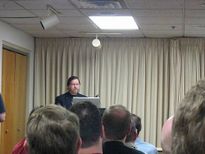
In 2015, BloombergView reported concerning the United States:
| “ | According to a much-discussed 2012 report from the Pew Research Center on Religion and Public Life, only 3 percent of U.S. atheists and agnostics are black, 6 percent are Hispanic, and 4 percent are Asian. Some 82 percent are white. (The relevant figures for the population at large at the time of the survey were 66 percent white, 11 percent black, 15 percent Hispanic, 5 percent Asian.)
...Craig Keener, in his huge review of claims of miracles in a wide variety of cultures, concludes that routine rejection of the possibility of the supernatural represents an impulse that is deeply Eurocentric.[52] |
” |
At the same time, due to immigration, Europe is expected to become more desecularized in the 21st century (See also: Global atheism and Atheist population).
In 2011, Beliefnetnews reported concerning the race and gender of American atheists:
| “ | From the smallest local meetings to the largest conferences, the vast majority of speakers and attendees are almost always white men. Leading figures of the atheist movement — Richard Dawkins, Sam Harris, Christopher Hitchens and Daniel Dennett — are all white men.
But making atheism more diverse is proving to be no easy task. Surveys suggest most atheists are white men. A recent survey of 4,000 members of the Freedom from Religion Foundation found that 95 percent were white, and men comprised a majority.[72] |
” |
Expected racial demographic changes in the Western World[edit]
See also: Growth of evangelical Protestantism in Europe and British atheism
In the United Kingdom, by the year 2050, 30 percent of the population is expected to be non-white.[73] In the United States, the Hispanic population is expected to triple by the year 2050 and become 30% of the United States population.[74] Yale Daily News reported in an article entitled White Europeans: An endangered species? that "Without a major shift in the current fertility trends, industrialized Europe will see its native population decline by about three-fourths over the 21st century."[75]
Atheism and diversity[edit]
See also: Atheism and diversity
As far as the issue of diversity within the atheist population, compared to Christianity, atheism has a significantly less degree of cultural/geographic, racial, gender and personal wealth diversity (see: Atheism and diversity).
[edit]

See also: Atheism and morality
Atheism and morality studies[edit]
See also: Atheism and morality studies
Atheism and psychopathy[edit]
See: Atheism and psychopathy
Barna Group study on behavior of atheists vs. evangelical Christians[edit]
Richard Deem wrote:
| “ | A random sample of 1003 adults were surveyed in May, 2008 by The Barna Group for their participation in a number of negative behaviors within the previous week. The results showed that there were vast differences in the behaviors of evangelicals compared to agnostics/atheists.
These results show that atheists/agnostics participate in morally questionable behaviors to a much greater degree than evangelical Christians - an average of nearly five times the frequency![76] |
” |
[edit]
The Barna Group found that atheists and agnostics in America were more likely, than theists in America, to look upon the following behaviors as morally acceptable: illegal drug use; excessive drinking; sexual relationships outside of marriage; abortion; cohabitating with someone of opposite sex outside of marriage; obscene language; gambling; pornography and obscene sexual behavior; and engaging in homosexuality/bisexuality.[33] Given the many diseases associated with homosexuality, the biblical prohibition against homosexuality is quite arguably one of the many examples where the Bible exhibited knowledge that was ahead of its time.
University study: Public perception of atheist morality[edit]
In 2014, a University of Kentucky study was published by Will M. Gervais, which was entitled Everything Is Permitted? People Intuitively Judge Immorality as Representative of Atheists, and the study indicated that "even atheist participants viewed immorality as significantly more representative of atheists than of other people."[77]
For more information, please see:
- Atheist population and immorality
- Abortion and atheism
- Atheism and deception
Atheism and care of the environment statistics[edit]
- Atheism and care of the environment statistics
Atheism and child pornography/prostitution statistics[edit]
See: Atheism and child pornography and Atheistic Thailand and child prostitution and Atheism, pederasty and NAMBLA
Atheistic Denmark and child pornography[edit]
See also: Atheistic Denmark and child pornography

In 2009, Suzanne Ost reported in her book published by Cambridge University Press, that the child pornography material produced in Denmark (and Holland) still constituted the largest part of child pornography that was currently available, having been transferred into digital format and uploaded onto the internet.[78]
In 2005 Denmark was ranked the third most atheistic country in the world and the website adherents.com reported that in 2005 43 - 80% of Danes are agnostics/atheists/non-believers in God.[30] Denmark has the highest rate of belief in evolution in the Western World.[79]
The 2003 book entitled Overcoming Violence Against Women and Girls: The International Campaign to Eradicate a Worldwide Problem written by authors Rahel Nardos; Mary K. Radpour; William S. Hatcher and Michael L. Penn, declared:
| “ | The largest source of commercial child pornography is Denmark. Denmark became the world's leading producer of child pornography when, in 1969, it removed all restrictions on the production and sale of any type of pornographic material. "The result," notes Tim Tate, "was a short-lived explosion in adult pornography, and the birth of commercial child pornography. In his work, Tate links the global spread of child pornography to two men: Willy Strauss, founder of Bambina Sex, the world's first child-pornography magazine, founded in 1971; and Peter Theander, founder of Colour Climax Corporation and the producer of a short, professionally made pornographic film series entitled Lolita. Lolita depicts the sexual abuse of prepubescent boys and girls. Although Danish law at the time rendered the work of Strauss and Theander legal, by 1979 when Denmark finally banned the production and sale of child pornography it had already become such a financial success on the international market that it has proven to be nearly impossible to bring its spread under control.[80] | ” |
Suzanne Ost, in her 2009 book Child Pornography and Sexual Grooming: Legal and Societal Responses published by Cambridge University Press, wrote about the child pornography created by Denmark/Holland during this period:
| “ | Taylor and Quayle note that the material produced during this period still constitutes the largest part of child pornography that is currently available, having been transferred into digital format and uploaded onto the internet.[78] | ” |
Nontheistic Thailand and child prostitution[edit]
See also: Nontheistic Thailand and child prostitution
In Thailand, the nontheistic form of Buddhism called the Theravada school of Buddhism is prevalent.
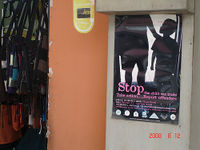
In Thailand, the nontheistic form of Buddhism, called the Theravada school of Buddhism, is prevalent.
CNN reported "Col. Apichart says online forums are abuzz with talk about Thailand being a child molesters' paradise."[81]
According to a report compiled by Police Colonel Naras Savestanan, Ph.D., Deputy Director-General, Department of Special Investigation, Ministry of Justice, Thailand:
| “ | Thailand has been identified as one of the most popular destinations for child sex abusers since 1980s...
In 2007, there were 500,000 sexually alluring web pages and 250 websites showing nude video clips of teenagers in Thailand.[82] |
” |
Thailand is often called "a child molesters' paradise".[83]
Thailand’s Health System Research Institute declared that child prostitutes make up 40% of all prostitutes in Thailand.[84]
Netherlands and child pornography[edit]
See also: Netherlands and child pornography
In 2005, the Netherlands was ranked the 13th most atheistic country in the world and the website adherents.com reports that in 2005 39 - 44%% of the Dutch were agnostics/atheists/non-believers in God.[30] The Netherlands also has the 11th highest rate of belief in evolution as far as Western World nations.[79]
In 2011, RNW archive (RNW is the former Radio Netherlands Worldwide or Wereldomroep) reported in an article entitled Massive Dutch-run child pornography ring revealed:
| “ | Almost 200 suspects have already been arrested in a large-scale international child pornography ring centred in the Netherlands.
Speaking from the Hague, Europol Director Rob Wainwright, together with law enforcement representatives from five countries, announced the round-up of the internet ring on Wednesday. In the largest ever operation of its kind, police in 30 countries have arrested 184 suspects and identified 486 others. Mr Wainwright says more will follow in short order. Peter Davies, Director of the Child Exploitation and Online Protection Centre, says arrests were being made yesterday and today in the UK and more are planned for tomorrow. Meanwhile, five arrests have been made in the United States and 17 in Spain. The investigation, called Operation Rescue, started three years ago.[85] |
” |
Irreligious Britain and child pornography[edit]
See also: Irreligious Britain and child pornography

On September 23, 2014, The Telegraph reported:
| “ | A nationwide investigation into internet paedophiles has caught more than 25,000 people suspected of viewing images of child abuse in this country.
Operation Notarise, which started this year, has led to 660 arrests. However, the National Crime Agency says that it will never be able to pursue all of those caught up in the inquiry, according to the Times. The agency said that it was also looking at new techniques, including strategies borrowed from counter- terrorism policing, to identify and curb the activities of online offenders. A spokesman said: “We cannot confirm any specific numbers. But we have previously said that we believe there are between 50,000 and 60,000 people in Britain who are accessing child abuse images.”[86] |
” |
Atheistic Czech Republic and child pornography/molestation[edit]
See also: Atheistic Czech Republic and child pornography
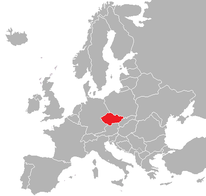
From a historical perspective, the Czechs have been characterised as "tolerant and even indifferent towards religion".[88] According to the 2011 census, 34.2% of the Czech population declared they had no religion, 10.3% was Roman Catholic and 10.2% followed other forms of religion both denominational and nondenominational. Furthermore, 45.2% of the population did not answer the question about religion.[89] From 1991 to 2001 and further to 2011 the adherence to Roman Catholicism decreased from 39.0% to 26.8% and then subsequently to 10.3%.[90]
Věra Říhová in her article entitled The Czech Republic as a Paedophile Paradise wrote:
| “ | I would like to dwell on the statistics on rape and sexual abuse of children. The study shows that 6% of women have been raped once, and 5% more than once - most often by their own husband or partner. 7% of women and 3% of men were sexually abused as children. That's 528,820 Czech citizens (I have calculated this using the population statistics). Approximately one in twenty people were sexually abused as children, which is a very high number.
Why is the Czech Republic labelled a "Paedophile's Paradise"? That definitely doesn't mean that all Czechs are paedophiles. I think that the reasons behind it are the poor criminal investigation methods and the very low punishments, or more often offenders going unpunished. In the Czech Republic it is still believed that women are here to serve men, especially the older generation still accept the ownership of women as property. The rights of young children are totally neglected or even disregarded. Children are their parents` property and their rights stay silently on paper. Home Secretary Ivan Langer resolutely denied there are problems with child abuse in the Czech Republic and, with a few exceptions, no one is interested in child cruelty or abuse.[87] |
” |
In 2007, the Washington Post published the article Czech Bill On Child Porn Faces Resistance
| “ | When Austrian authorities announced in February that they had uncovered an online child pornography ring, pedophiles around the world suddenly became potential targets of criminal investigations -- but not the ring's 63 customers in the Czech Republic, where downloading and possessing such images is not a crime.
The videos, which show at least one girl who appears to be 5 years old and include on-camera scenes of girls being raped, are characterized by Austrian police as "the most brutal form of sexual abuse." In all, Austrian police seized 1,132 DVDs, 1,428 computer disks, 213 videocassettes, 31 computers, seven laptops and 23 external hard drives. They passed along the computer details of more than 2,300 suspected clients of the site to law enforcement officials in nearly 80 countries.[91] |
” |
For more information, please see:
- Atheism and child pornography
- Atheistic Denmark and child pornography
- Atheistic Thailand and child prostitution
- Netherlands and child pornography
- Irreligious Britain and child pornography
- Atheism, pederasty and NAMBLA
- Atheistic Czech Republic and child pornography
- Atheistic Sweden and child pornography
Atheism and its retention rate in individuals[edit]
See also: Atheism and its retention rate in individuals and Atheism and poor relationships with parents and Atheism and immaturity
In 2012, a Georgetown University study was published indicating that only about 30 percent of those who grow up in an atheist household remain atheists as adults.[1] See also: Atheism and its retention rate in individuals and Atheism and poor relationships with parents
A 2012 study by the General Social Survey of the social science research organization NORC at the University of Chicago found that belief in God rises with age, even in atheistic nations.[92] See also: Atheism and immaturity
Atheism and evangelism statistic[edit]
See also: Atheism and apathy and Atheism and inspiration and Atheism and sloth and Atheism and cowardice
According Pew Research:
| “ | In the 2014 Religious Landscape Study, self-identified atheists were asked how often they share their views on God and religion with religious people. Only about one-in-ten atheists (9%) say they do at least weekly, while roughly two-thirds (65%) say they seldom or never discuss their views on religion with religious people. By comparison, 26% of those who have a religious affiliation share their views at least once a week with those who have other beliefs; 43% say they seldom or never do.[93] | ” |
- See also: Atheism vs. Christian revivals
Atheism and alcoholism[edit]
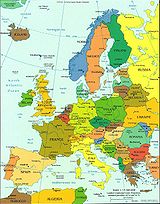
See also: Atheism and alcoholism
Atheists and atheistic cultures often have significant problems with excess alcohol usage (For more information please see: Atheism and alcoholism).
Secular countries/regions and alcoholism[edit]
Secular Europe:
According to the World Health Organization's (WHO) regional office in Europe, "The WHO European Region has the highest proportion in the world of total ill health and premature death due to alcohol.[94]
- Secular Europe and alcoholism
- Britain and alcoholism
- Atheistic France and alcoholism
- Atheistic Germany and alcoholism
- Atheistic Czech Republic and alcoholism
- Atheistic Estonia and alcoholism
- Irreligious Finland and alcoholism
- Atheistic Denmark and alcoholism
- Atheistic Netherlands and alcoholism
- Atheistic Sweden and alcoholism
Australia:
An Australian National Council on Drugs (ANCD) report indicated that 20% of Australians drink at levels putting them at risk of lifetime harm.[95]
For more information, please see: Irreligious Australia and alcoholism

Asian countries:
- Atheistic China and alcoholism
- Atheistic Thailand and alcoholism
- North Korea and alcoholism
History of communism:
Alcoholism was a serious social problem in the former atheistic Soviet Union.[96] Between 1940 and 1980, this atheist state had the largest increase of the amount of alcohol usage in the developed world.[97]
- Soviet Union and alcoholism
- Communist East Germany and alcoholism
Atheism, alcoholism and anger[edit]
Atheism, alcoholism and anger
Irreligion, alcoholism and various generations in the United States[edit]
- Irreligion, generations in the United States and alcoholism
Recent generations in the United States:
- Irreligion, baby boom generation and alcoholism
- Irreligion, Generation X and alcoholism
- Irreligion, millenials and alcoholism
Atheism and illegal drug use and drug addiction[edit]
[[https://www.conservapedia.com/File:Powder meth foil small.jpg|thumbnail|200px|right|Studies indicate that religious individuals are less likely to engage in illegal drug use than atheists/nonreligious.[98][99] ]
See also: Atheism and drug addiction
Studies indicate that religious individuals are less likely to engage in illegal drug use than atheists/nonreligious.[99][100][101]
According to Science Daily:
| “ | Young Swiss men who say that they believe in God are less likely to smoke cigarettes or pot or take ecstasy pills than Swiss men of the same age group who describe themselves as atheists. Belief is a protective factor against addictive behaviour. This is the conclusion reached by a study funded by the Swiss National Science Foundation.[101] | ” |
Additional statistics on religion/irreligion and drug use[edit]

The Christian Post reported:
| “ | Religion has "enormous potential for lowering the risk of substance abuse among teens and adults," according to the National Center on Addiction and Substance Abuse. They report that adults and teens who consider religion to be very important and who attend religious services weekly or more often are "far less likely to smoke, drink or use illicit drugs." In addition, those battling addiction who attend spiritually-based support programs as part of their treatment "are more likely to maintain sobriety."
By contrast, adults who never attend religious services are "almost seven times likelier to drink, three times likelier to smoke, more than five times likelier to have used an illicit drug other than marijuana, almost seven times likelier to binge drink and almost eight times likelier to use marijuana" than adults who attend religious services at least once a week. Research also indicates that teenagers who are involved in religious activities are half as likely to have substance abuse problems as those who are not. In addition, spirituality has been found to help teens overcome genetic tendencies for alcoholism, social pressure, and a family history of abuse.[100] |
” |
Atheism and loss of economic productivity statistics[edit]
See also: Atheism and lost economic productivity and Atheism and economics
Sloth in atheistic communist countries vs. Protestant work ethic[edit]
See also: Atheism and sloth Protestant work ethic statistics and Protestant Ethic and the Spirit of Capitalism [[https://www.conservapedia.com/File:Flag of the PRC.png|thumbnail|right|200px|In China, the growth in religion has accompanied China’s fast economic growth over the last twenty years.[102]]] Atheism is a part of Marxist-Leninist and Maoist/Chinese communist ideology (See: Atheism and communism).
Widespread sloth in the former Soviet Union helped cause much poverty.[103] A study performed in the former Soviet Union found that over 50% of the work force admitted to drinking alcohol while on the job (See also: Atheism and alcoholism).[104] In the former Soviet Union, a popular joke was that the workers pretended to work and the Soviet Union pretended to pay them.[105]
On the other hand, Harvard University historian Niall Ferguson declared: "Through a mixture of hard work and thrift the Protestant societies of the North and West Atlantic achieved the most rapid economic growth in history."[102]
In China, the growth in religion has accompanied China’s fast economic growth over the last twenty years.[102] Christianity is seeing rapid growth in China and the historian Niall Ferguson attributes this recent economic growth to the Protestant work ethic being more incorporated into Chinese society.[102] See also: Protestant work ethic and Growth of Christianity in China
Secular Europe's economic crisis[edit]

The Eurozone crisis is an ongoing economic crisis which has been negatively affecting Eurozone countries since late 2009. It consists of a sovereign debt crisis, a banking crisis and an economic growth and competitiveness crisis.
Western Europeans work less hours than Americans and workers in many other countries.[106][107][108] Commenting on this matter, Niall Ferguson wrote a 2004 article published in The Telegraph entitled, "The atheist sloth ethic, or why Europeans don't believe in work".[109]
Niall Ferguson also noted in his article:
| “ | There are, for example, many more Europeans out of work than Americans; over the past decade, US unemployment has averaged 4.6 per cent, compared with 9.2 per cent for the EU. Another difference is in labour participation. Between 1973 and 1998, the percentage of the American population in employment rose from 41 to 49 per cent. But in Germany and France, the equivalent percentage fell to, respectively, 44 and 39 per cent.[109] | ” |

In addition, one the significant causes of Europe's economic stagnation is an aging population and the low fertility rates in many European countries.[111]
The regions of secular Europe which are performing better than the rest of Europe often have a cultural legacy of the Protestant work ethic. For example, a 2011 Telegraph article noted: "Either way, not a single Protestant or Germanic EU country has so far needed a bailout."[112] The Protestant Reformation started in Germany and Germany has one of the strongest economies of Europe.
See also:
- The Eurozone Crisis explained in 5 simple graphs
- Why is there a Euro Crisis?
- Is Europe In Decline? One Professor Thinks So - Forbes magazine, 9/16/2014
In addition, many irreligious states (includes various countries in secular Europe) engage in an economic policy of tax, spend and sovereign debt accumulation (see also: Atheism and politics and Secular left).[113]
Economic and societal deterioration in secular Sweden[edit]
See: Economic and societal deterioration in secular Sweden
An examination of atheism and anger/arrogance[edit]

Atheism and anger[edit]
See also: Atheism and anger and Atheism and unforgiveness
On January 1, 2011, CNN reported:
| “ | People unaffiliated with organized religion, atheists and agnostics also report anger toward God either in the past, or anger focused on a hypothetical image - that is, what they imagined God might be like - said lead study author Julie Exline, Case Western Reserve University psychologist.
In studies on college students, atheists and agnostics reported more anger at God during their lifetimes than believers.[115] |
” |
Various studies found that traumatic events in people's lives has a positive correlation with "emotional atheism".[116]
Although anti-theists, militant atheists and New Atheists give the general public the perception that atheists are exceedingly angry individuals, research indicates that the atheist population as a whole is not angrier than the general population (see: Various types of atheists/non-believers and anger).
For more information, please see: Atheism and anger
Atheism and arrogance[edit]
See also: Atheism and arrogance
Using special text analysis software, the social psychologist Jonathan Haidt found that New Atheists very often wrote in dogmatic terms in their major works using words such as “always,” “never,” “certainly,” “every,” and “undeniable.”[117] Of the 75,000 words in Sam Harris's The End of Faith, 2.24% of them connote or are associated with certainty.[117] See: Atheism and arrogance
The works of New Atheists often betray an amateurish knowledge of philosophy/religion. For example, atheist philosopher Dr. Michael Ruse declared concerning Richard Dawkins' book The God Delusion: "The God Delusion makes me embarrassed to be an atheist."[118] Theodore Beale's book The Irrational atheist found multiple errors in reasoning and factual errors when it came to the works of New Atheist authors.[119] See also: Richard Dawkins and pseudoscience
Atheism and mental health statistics[edit]
See also: Atheism and suicide and Atheism and depression and Atheism and self-esteem
In 1894, the NY Times declared regarding atheism and suicide:
| “ | Dr. Martin urged that a great cause of suicide was atheism. It was, he said, a remarkable fact that where atheism prevailed most, there suicides were most numerous. In Paris, a recent census showed one suicide to every 2,700 of the population.[120] | ” |
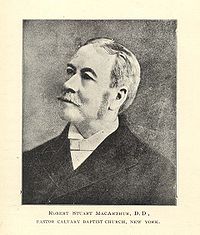
The website Adherents.com reported the following in respect to atheism and suicide:
| “ | Pitzer College sociologist Phil Zuckerman compiled country-by-country survey, polling and census numbers relating to atheism, agnosticism, disbelief in God and people who state they are non-religious or have no religious preference. These data were published in the chapter titled "Atheism: Contemporary Rates and Patterns" in The Cambridge Companion to Atheism, ed. by Michael Martin, Cambridge University Press: Cambridge, UK (2005). In examining various indicators of societal health, Zuckerman concludes about suicide:
"Concerning suicide rates, this is the one indicator of societal health in which religious nations fare much better than secular nations. According to the 2003 World Health Organization's report on international male suicides rates (which compared 100 countries), of the top ten nations with the highest male suicide rates, all but one (Sri Lanka) are strongly irreligious nations with high levels of atheism. It is interesting to note, however, that of the top remaining nine nations leading the world in male suicide rates, all are former Soviet/Communist nations, such as Belarus, Ukraine, and Latvia. Of the bottom ten nations with the lowest male suicide rates, all are highly religious nations with statistically insignificant levels of organic atheism."[124] |
” |
Atheism and loneliness[edit]

Loneliness has been linked to numerous physical and mental health problems.[126][127] See: Atheism and health
Compared to religious cultures where an extended family and a sense of community prevails, secular countries are often lonelier societies. In addition, numerous studies and other data indicate that atheists have lower emotional intelligence (see: Atheiam and emotional intelligence).
For more information, please see:
- Atheism and loneliness
- Secular Europe and loneliness
- England and loneliness
- Atheistic France and loneliness
- Atheistic Germany and loneliness
- Irreligious Australia and loneliness
- Atheistic Sweden and loneliness
- Irreligious Finland and loneliness
- Atheistic China and loneliness
Indian anthropologist's commentary on lonelineness in atheistic Denmark[edit]
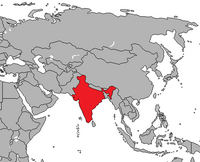
In 1993, Reuters reported:
| “ | Indian anthropologist Prakash Reddy has turned the tables on Western colleagues who put Third World cultures under the microscope.
Reddy, of Sri Venkateswara University at Tirupati in the southern state of Andhra Pradesh, spent four months in the village of Hvilsager--population 104--on Denmark's Jutland peninsula. His study, published in book form in English under the title "Danes are like that!" expresses dismay at the loneliness he found and the hope that India would not have to pay the same price for prosperity. "The most fundamental question that should bother every social scientist in the East is: Is there no way of achieving development without sacrificing the human values and the way of life cherished by homo sapiens?" he asked.... Reddy said he found a neat and tidy, cozy little society, stiff, rigid and seemingly full of practical, down-to-earth but lonely people, isolated from each other and lacking much sense of religion. Compared to the teeming villages of India, the Danish hamlet seemed deserted and closed. To an Indian, accustomed to constant close contact in an extended family and community, Danish life was cold if not nonexistent, Reddy said. "Coming from an Indian village, I was used to seeing people in the streets . . . but here in Denmark not a single soul was sighted and, except for the sound of a passing automobile, absolute silence prevailed," Reddy wrote.[129] |
” |
[edit]

See also: Atheism and intelligence and Intelligence trends in religious countries and secular countries
The Flynn effect is the significant and long-sustained increase intelligence test scores measured in many parts of the world from roughly 1930 to the present.[132] In some secular, economically developed countries, the Flynn effect has ceased and their scores on standardized intelligence tests are falling.[133] However, the Flynn effect is continuing in developing countries which tend to be more religious (see: Intelligence trends in religious countries and secular countries and Atheism and intelligence).
Atheism/theism and educational statistics[edit]
See also: Atheism and education and Atheism and academia
In 2001, the atheist and philosopher Quentin Smith declared:
| “ | Naturalists [atheists] passively watched as realist versions of theism … began to sweep through the philosophical community, until today perhaps one-quarter or one-third of philosophy professors are theists, with most being orthodox Christians…. God is not 'dead' in academia; he returned to life in the 1960's and is now alive and well in his last academic stronghold, philosophy departments."[134] | ” |
Although atheistic indoctrination in school systems can have an effect on individuals (See: Atheist indoctrination), research indicates that social/economic insecurity often has a more significant impact.[135] See: Atheism and education and Atheism and academia
In the United States, religion is positively correlated to education; a scholarly study published in an academic journal titled the Review of Religious Research demonstrated that increased education is correlated with belief in God and that "education positively affects religious participation, devotional activities, and emphasizing the importance of religion in daily life."[136][137][138][139]
One of the reasons education is positively correlated with belief in God in the United States is that the demographics of people attending higher education has shifted due to more women and southerners attending higher education (these two groups are more likely to be theists. See: Atheism and women).[140] [[https://www.conservapedia.com/File:Penn Jillette.jpg|thumbnail|175px|right|A National Public Radio reviewer of one of atheist Penn Jillette's books found the book "showy and assaultive" in terms of its use of profanity.[141] See: Atheism and profanity ]
Atheism and profanity[edit]
See also: Atheism and profanity and Atheism and culture
Studies indicate that atheists engage in more profanity than Christians/theists and are more likely to believe that obscene language is acceptable to engage in.[142] Use of profanity by individuals is negatively correlated with conscientiousness and agreeableness.[143] For more information, please see: Atheism and profanity
Atheism and the media[edit]
See also: Atheism and the media
The Media Research Center released a study in 2008 reporting pro-atheism bias by major press outlets in the United States.[144] The study found that 80% of mainstream media coverage of atheism was positive and that 71% of Christian-themed stories had an atheist counterpoint or were written from an atheist perspective.[144]
Views on atheists statistics[edit]
Concerning various views on atheists, research in the American Sociological Review finds that among several groups listed, atheists are the group that Americans relate least to in terms of their vision of American society and are the group most likely to be mentioned as one that Americans would not want to have marry into their family.[145]
On December 10, 2011, USA Today reported in a story entitled Study: Atheists distrusted as much as rapists:
| “ | The study, conducted among 350 Americans adults and 420 Canadian college students, asked participants to decide if a fictional driver damaged a parked car and left the scene, then found a wallet and took the money, was the driver more likely to be a teacher, an atheist teacher, or a rapist teacher?
The participants, who were from religious and nonreligious backgrounds, most often chose the atheist teacher. The study is part of an attempt to understand what needs religion fulfills in people. Among the conclusions is a sense of trust in others. People find atheists very suspect," Shariff said. "They don't fear God so we should distrust them; they do not have the same moral obligations of others. This is a common refrain against atheists. People fear them as a group."[146] |
” |
Hate crimes in the United States against atheists/agnostics are very low in number[edit]
See also: Persecution of atheists
According to a 2007 Pew Forum survey, about 4% of Americans are atheists/agnostics.[147] A 2008 Gallup poll showed that 6% of the U.S. population believed that no god or universal spirit exists.[148]
According to 2013 FBI statistics, 6/10 of a percent of hate crimes were against atheists/agnostics.[149][150]
Atheism vs. Islam and atheist persecution[edit]
See also: Persecution of atheists
As atheism vs. Islam conflict has increased in the world, there are growing reports of Islamic governments imprisoning/executing atheists and radical Islamacists killing atheists, but they are still relatively few in number.[151]
Ex-Muslim atheists are becoming more outspoken, but Muslim tolerance is still rare[edit]
[[https://www.conservapedia.com/File:Flag of Turkey.png|thumbnail|left|200px|According to The Economist, in a handful of majority-Muslim countries atheists can live safely, if quietly. Turkey is one example.[152]]] In 2012, The Economist indicated in an article entitled Ex-Muslim atheists are becoming more outspoken, but Muslim tolerance is still rare:
| “ | In a handful of majority-Muslim countries atheists can live safely, if quietly; Turkey is one example, Lebanon another. None makes atheism a specific crime. But none gives atheists legal protection or recognition. Indonesia, for example, demands that people declare themselves as one of six religions; atheism and agnosticism do not count. Egypt’s draft constitution makes room for only three faiths: Christianity, Judaism and Islam.[152] | ” |
Turkey and Lebanon have had significant Christian influence in their cultural past. For example, the churches listed in the Book of Revelation were located in Turkey and Constantinople was renamed Istanbul after the Muslim conquest of the city.[153]
Atheism and politics[edit]
See also: Atheism and politics and Secular left and History of atheism
Historically and in recent times the majority of atheist have leaned towards the left/liberal side of the political spectrum in both their economic and social views (see: Secular left). For example, a Harris interactive poll found that most American atheists are liberal.[154]
Irreligion and criminality statistics[edit]
Irreligious prison population[edit]

See also: Irreligious prison population and Religion and crime reduction
The irreligious prison population, according to government data of many sovereign states, as well as that of independent surveys, makes up a large percentage of the overall prisoner demographic. In the United Kingdom of Great Britain and Northern Ireland, according to the 2011 Census, the irreligious make up only "around a quarter of the population."[155] However, they are over-represented in the prison population, forming over 34% of all criminals.[156][157] These statistics confirm recent scientific research, which has concluded that "the more involved people are with religious life, the less likely they are to fall into criminal behavior."[158]
In addition, multiple studies and historical data demonstrate that religion has a positive effect in terms of crime reduction (see: Religion and crime reduction).
Atheist prison statistics[edit]
- Atheists in U.S. prisons argument and atheist morality
- Atheist prison statistics
- Fellow Atheists: Quit Bragging About Our Prison Underrepresentation (Related to United States statistics)
Atheism and theft crime statistics[edit]
- Atheism and theft crime
- Irreligion and car theft
- Secular Europe and pickpocketing
Atheism and repressive prisons statistics[edit]
- Atheism and repressive prisons
Atheism vs. Christianity statistics[edit]
- Atheism vs. Christianity
- Christianity vs. atheism statistics
- Christianity statistics
Internet atheism statistics[edit]

See also: Internet atheism
In the early part of the 21st century, the atheist community was very active on the internet.[159] However, by 2008 there began a marked decline in internet atheism (see: Internet atheism web traffic volume).[160]
Google trends - Atheism and agnosticism terms[edit]
See: Google trends - Atheism and agnosticism terms
Richard Dawkins' website statistics[edit]
See also: Richard Dawkins' loss of influence
Traffic to Dawkins website is significantly down post-Elevatorgate (See: Richard Dawkins' loss of influence and Alexa rankings of Richard Dawkins' website).
Although his following of Dawkian atheist has significantly waned post-Elevatorgate and due to his generally abrasive manner, he does retain a small cult following (See: Richard Dawkins' cult of personality and Atheist cults).
[edit]
- Post sexual harassment allegations against Lawrence Krauss and David Silverman, searches for atheism related topics have dropped markedly
Atheist PZ Myers says atheists are largely a population of internet nerds and geeks[edit]
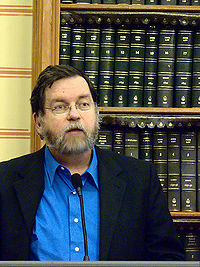
See also: Atheist nerds and Internet atheism and Atheism and women and Atheism and social outcasts and Decline of atheism
In 2013, the atheist PZ Myers declared:
| “ | If we're going to expand our base and we're going to draw in more people to recognize the virtues of living in a secular world, we need to appeal to more than just that geek and nerd subset of the population. We need to have a wider base. ...I seriously believe that we're on the cusp of a crisis. We're not there yet but it's looming in front of us. Will we adapt and thrive and change the world? Or will we remain an avocation for a prosperous and largely irrelevant subset of the population? Will we become something more than a scattered society of internet nerds? That's what we have to do.[161] | ” |
In response, David Klinghoffer at Evolution News and Views wrote:
| “ | A crisis looms, in Myers's view, because he looks around himself and sees a not very promising basis for a mass movement. He's right. There is indeed a quality of geeky isolation from reality, common sense, and the fullness of life that I see as a motif in atheist and Darwin activism alike.[161] | ” |
For more information please see: Internet atheism and Atheist nerds
Irreligion and superstition/pseudoscience[edit]
See also: Irreligion and superstition

In September 2008, the Wall Street Journal reported:
| “ | The reality is that the New Atheist campaign, by discouraging religion, won't create a new group of intelligent, skeptical, enlightened beings. Far from it: It might actually encourage new levels of mass superstition. And that's not a conclusion to take on faith -- it's what the empirical data tell us.
"What Americans Really Believe," a comprehensive new study released by Baylor University yesterday, shows that traditional Christian religion greatly decreases belief in everything from the efficacy of palm readers to the usefulness of astrology. It also shows that the irreligious and the members of more liberal Protestant denominations, far from being resistant to superstition, tend to be much more likely to believe in the paranormal and in pseudoscience than evangelical Christians.... This is not a new finding. In his 1983 book "The Whys of a Philosophical Scrivener," skeptic and science writer Martin Gardner cited the decline of traditional religious belief among the better educated as one of the causes for an increase in pseudoscience, cults and superstition. He referenced a 1980 study published in the magazine Skeptical Inquirer that showed irreligious college students to be by far the most likely to embrace paranormal beliefs, while born-again Christian college students were the least likely.[162] |
” |
A study published in Skeptical Inquirer concluded that Bible-believers are the ones “who appear most virtuous according to scientific standards when we examine the cults and pseudo-sciences proliferating in our society today.”[163]
Atheism and science statistics[edit]
Atheism and the Scientific Revolution statistic[edit]
See also: Christianity and science
Sociologist Rodney Stark investigated the individuals who made the most significant scientific contributions between 1543 and 1680 A.D., the time of the Scientific Revolution. In Stark's list of 52 top scientific contributors,[164] only one (Edmund Halley) was a skeptic and another (Paracelsus) was a pantheist. The other 50 were Christians, 30 of whom could be characterized as being devout Christians.[164] Stark believes that the Enlightenment was a ploy by "militant atheists" to claim credit for the rise of science.[165]
Atheism and the scientific community statistics[edit]
See: Atheism and science
Atheists and the National Academy of Sciences[edit]
See: Atheists and the National Academy of Sciences
Atheism and purpose[edit]
See also: Atheism and purpose and Atheists doubting the validity of atheism and Denials that atheists exist
On October 17, 2014, The New York Times published an article entitled Does everything happen for a reason? which declared:
| “ | But research from the Yale Mind and Development Lab, where we work, suggests that this can’t be the whole story. In one series of studies, recently published in the journal Cognition, we asked people to reflect on significant events from their own lives, such as graduations, the births of children, falling in love, the deaths of loved ones and serious illnesses. Unsurprisingly, a majority of religious believers said they thought that these events happened for a reason and that they had been purposefully designed (presumably by God). But many atheists did so as well, and a majority of atheists in a related study also said that they believed in fate — defined as the view that life events happen for a reason and that there is an underlying order to life that determines how events turn out.
These atheists’ responses weren’t just the product of living in America’s highly religious society. Research done at Queen’s University in Belfast by the psychologists Bethany Heywood and Jesse Bering found that British atheists were just as likely as American atheists to believe that their life events had underlying purposes, even though Britain is far less religious than America. In other studies, scheduled to be published online next week in the journal Child Development, we found that even young children show a bias to believe that life events happen for a reason — to “send a sign” or “to teach a lesson.” This belief exists regardless of how much exposure the children have had to religion at home, and even if they’ve had none at all.[166] |
” |
Additional irreligion and health statistics[edit]
See also: Atheism and obesity and Atheism and health
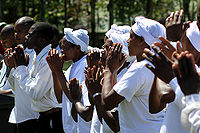
In 2005, there were four times as many non-Western World Christians as there were Western World Christians.[167]
The traditional African diet is healthier than many Western World invividuals' diets and Africa has some of the lowest obesity rates in the world.[168][169] In recent years, Christianity has seen a rapid growth in Africa.[170] See: Global atheism and Atheist population
According to the Gallup Inc., "Very religious Americans are more likely to practice healthy behaviors than those who are moderately religious or nonreligious."[171] See: Atheism and health
In the United States, the greater the degree of irreligiosity in a generation, the higher their obesity rate is. See: Atheism and obesity and Generation X, irreligion and obesity and Millennials, irreligion and obesity and Baby boom generation, irreligion and obesity
3 out of 5 of the leaders of the New Atheism movement have had issues with being overweight as can be seen HERE and HERE and HERE. The ex-atheist Richard Dawkins has publicly indicated that he is an agnostic (see: Richard Dawkins and agnosticism). Since Dawkins is an agnostic and not an atheist, this would mean that 3 out of 4 of the atheist founders of the New Atheism movement had excess weight issues. At a 75% of individuals overweight population, this would make the atheist founders of the New Atheist movement one of the most overweight populations in world history in terms of the percentage of people overweight.[172][173] See: New Atheism leadership's problem with excess weight and Atheism and obesity
The traditional African diet is healthier than many Western World peoples' diets and Africa has some of the lowest obesity rates in the world.[168][169] In recent years, Christianity has seen a rapid growth in Africa.[170] Secular Europe has a higher obesity rate than Africa (See: Secular Europe and obesity). In addition, religious Africa has a lower obesity rate than atheistic China (see: China and obesity).
The Iona Institute reported:
| “ | A meta-analysis of all studies, both published and unpublished, relating to religious involvement and longevity was carried out in 2000. Forty-two studies were included, involving some 126,000 subjects. Active religious involvement increased the chance of living longer by some 29%, and participation in public religious practices, such as church attendance, increased the chance of living longer by 43%.[174][175] | ” |
Dietary practices of atheists statistics[edit]
See: Dietary practices of atheists (Dietary habits of various irreligious regions)
Statistics about the collapse of atheism in the area of the former Soviet Union[edit]

See also: Collapse of atheism in the former Soviet Union
In 2003, the Weatherhead Center for International Affairs at Harvard published a paper by Assaf Moghadam entitled A Global Resurgence of Religion? which declared:
| “ | As the indications leave little doubt, Russia is showing clear signs of a religious resurgence. In fact, all seven criteria by which change in religious behavior and values are measured here confirmed that Russia is experiencing what could be called a religious revival. Since 1970, the nonreligious/atheist population has been on steady decline, from 52% in 1970 to 33% in 2000. Further, the percentage of this population is projected to decrease even further, possibly reaching the 20% mark in 2025. Between 1990 and 1997, belief in God has risen from 35% to a whopping 60%, while belief in the importance of God has climbed to 43% in 1997, up from 25% in 1990. More people have been raised religious in Russia in 1997 (20%) than at the beginning of the decade (18%), and 8.39% more Russians believed religion to be important toward the end of the 1990s, when compared to 1990. “Comfort in Religion” has also sharply increased within this time period, from less than 27% to over 46%. Finally, more and more Russians attend church services more regularly in 1997 than they did in 1990.
In the three Eastern European countries that were included in the WVS survey on belief in God, a drastic rise could be witnessed of respondents who answered this question in the affirmative. In Hungary, the percentage of believers in God jumped from 44% to 58% from 1981 to 1990, even prior to the collapse of the former Soviet Union. In Belarus, the number of people who believe in God nearly doubled over the course of the 1990s, from 36% to 68%, while in Latvia this figure almost quadrupled, from 18% to 67% in the same time period. Similar trends held true when it came to the importance of God, where there was a sharp rise in all three countries.[176] |
” |
20th century atheism and Soviet/Chinese Communism[edit]
See also: Atheism and communism and Soviet atheism

According to the University of Cambridge, historically, the "most notable spread of atheism was achieved through the success of the 1917 Russian Revolution, which brought the Marxist-Leninists to power."[177] Vitalij Lazarʹevič Ginzburg, a Soviet physicist, wrote that the "Bolshevik communists were not merely atheists but, according to Lenin's terminology, militant atheists."[178]
Vladimir Lenin similarly wrote: "A Marxist must be a materialist, i. e., an enemy of religion, but a dialectical materialist, i. e., one who treats the struggle against religion not in an abstract way, not on the basis of remote, purely theoretical, never varying preaching, but in a concrete way, on the basis of the class struggle which is going on in practice and is educating the masses more and better than anything else could."[179]
In 1955, Chinese communist leader Chou En-lai declared, "We Communists are atheists".[180]
Failure of Soviet Union state atheism statistics[edit]
In his work entitled Forced Secularization in Soviet Russia: Why an Atheistic Monopoly Failed Paul Froese wrote:
| “ | The failure of scientific atheism in Russia is interesting because it had every advantage.
First, the Soviet government generously financed atheists while brutally suppressing religious advocates. For this reason, scientific atheism should be considered the equivalent of a religious monopoly. Second, scientific atheism was promoted throughout Soviet Russia in schools, work- places, and the community. Finally, scientific atheism offered rituals, ceremonies, and the promise of a utopian society as a direct alternative to religious offerings. The most generous estimates of atheistic belief show that less than one-quarter of Russians were atheists and this number dramatically drops to around 5 percent of the population after the fall of communism. In other words, scientific atheism was surprisingly unsuccessful when one considers all its competitive advantages.[181] |
” |
Atheist music statistics[edit]

See also: Atheist music
Atheist music is music that has been written to express atheist ideology.
There is a small proportion of music compared to religious music. For example, Wikipedia, which was founded by an atheist and agnostic, has no article on "Atheist music", but Wikipedia does have an article on Christian music. The comedian Steve Martin wrote a satirical song entitled "“Atheists Don't Have No Songs”.[184] There are no atheist radio stations dedicated to playing atheist songs. In addition, although there are full-time Christian musicians who support themselves by playing for churches (or other Christian audiences) and through the sales of their music, there are no full-time atheist musicians who devote themselves to playing atheist music.
During the Christmas season many businesses play Christmas music and there is a large collection of Christmas songs. Businesses in the Western World rarely have atheist music playing in their establishments and when it does occur it is purely unplanned (for example, a radio station playing John Lennon's song Imagine).
Atheism and art statistics[edit]
See also: Atheist art and Argument from beauty

Atheist art is art which uses themes and/or imagery from atheism or atheistic concepts.
There is a small proportion of art compared to religious art. For example, Wikipedia has no article on "Atheist art", but Wikipedia does have an article on Christian art.
Atheists generally apathetic about atheist art[edit]
Most atheist individuals and groups do not use the limited amount of atheist art which is available.
The atheist and feminist Skepchick writer Any Roth wrote about the atheist population having apathy about atheist art: "Does art matter to atheism? This is actually an interesting question that I don’t think movement atheist thinks much about."[185]
Historically, religious institutions sponsored great works of art and architecture. Atheist groups do not have a tradition of sponsoring great works of art and architecture.
Atheist art commonly employs mockery and/or ugliness[edit]
See also: Atheism and mockery
An atheist posted to atheist Sam Harris' discussion board: "This idea started when I googled “atheist art”. You see I was expecting to find art. Instead, what you get is a whole bunch of knockoffs of famous religious art that has been disfigured and mutilated. This made me slightly ashamed."[186]
Atheism and cultural statistics[edit]
See also: Atheism and culture
Atheism and poetry statistics[edit]
See also: Atheist poetry
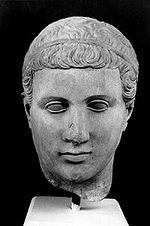
His position as a poet seems to be one of little prominence.[187]
There is no large body of quality atheistic poetry. For example, Wikipedia has no article on atheist poetry, yet it does have articles on Christian poetry and biblical poetry.[188][189][190]
In addition, the online book seller Amazon offers many books of Christian poetry as well as anthologies of Christian poetry (as of November 30, 2015 there were 61,064 search results for term "Christian poetry" at Amazon as far as soft cover and hard cover books being offered for sale to American consumers).[191] On the other hand, the selection being offered at Amazon for atheist poetry was very limited (as of November 30, 2015 there were 123 search results for term "atheist poetry" at Amazon as far as soft cover and hard cover books being offered for sale to American consumers and a great many of the books were not even books of atheist poetry).[192]
The British columnist Giles Coren wrote in The Times:
| “ | But it’s not the nihilism, the soullessness, the lack of poetry, the moral and physical ugliness, the shallow iconoclasm or the vainglory of atheists that bother me most. It’s the boringness.
Is there anything more boring in the world than an atheist?[193] |
” |
Diagoras of Melos was a 5th century B.C. Greek philosopher, poet, sophist and atheist. According to the book Greek Lyric Poetry: A Complete Collection of the Surviving Passages from the Greek Song-writers by George Stanley Farnell, "His position as a poet seems to be one of little prominence, and he probably abandoned his art for philosophical speculation."[187] There is little information about Diagoras of Melos' life and his beliefs. And no atheist poems have been found written by him as far as the historical record.
An atheistic school of thought can be found in ancient Indian thought and has existed from the time of the historical Vedic religion (2nd millennium B.C.).[194]
Using the above chronology of secular historians as far as the first appearances of atheists, the atheist population has had approximately six thousand years to compile a large body of quality atheistic poetry. Yet, atheists have not achieved this.
According to Wikipedia, "The influence of Christianity on poetry has been great in any area that Christianity has taken hold."[195]
Atheism and art/music[edit]
Relative to Christianity, which has a large collection of art/music, there is a very small collection of atheist art and atheist music.
Atheism and animal abuse statistics[edit]
- Atheism and animal abuse
USA states: Religion/irreligion and percentage of dog owners[edit]
See also: USA states: Religion/irreligion and percentage of dog owners
USA: 9 out 10 of states with the highest percentage of dog owners are in Protestant dominated regions[edit]
These 9 Protestant/evangelical Christianity dominated states are among the states with the highest percentage of dog owners: Arkansas, Kentucky, Missouri, West Virginia, Mississippi, Alabama, Tennessee, Texas, Oklahoma.[196][197] New Mexico is a Catholic dominated state and it is also among the top 10 states in terms of the percentage of dog owners.[198][199]
None of the least religious states are among the top 10 states in dog ownership[edit]
None of the least religious states in the United States were among the top 10 states in terms of the percentage of dog owners.[200]
American atheists and church attendance[edit]
See also: Atheists and church attendance
A Rice University study found that 17 percent - about one out of five scientists who describe themselves as either atheists or agnostics - actually go to church, although not too often.[201]
Atheist lawsuit statistics[edit]
See: Atheist lawsuits
Conservapedia atheism articles statistics[edit]
See: Conservapedia atheism articles statistics
See also[edit]
- Research on atheism
- Atheism and its anti-civilizational effects
- Agnosticism statistics
- Christianity vs. atheism statistics
- Richard Dawkins statistics
- Atheist population
- Rebuttals to atheist arguments
- Atheism vs. Christianity
- Christianity statistics
- Homosexuality statistics
- Resources for leaving atheism and becoming a Christian
Essays:
- Is atheism growing?
- 10 Reasons American atheism will see a significant decline
External links[edit]
- Interesting Statistics Contrasting Atheism and Christianity
- Atheism by country
- Table on the projected global shrinkage/growth of various worldviews including atheism (Source: Center for the Study of Global Christianity at Gordon-Conwell Theological Seminary)
- Post Scriptum To Original article, “Atheism and Divorce.”
- Pew Forum survey on religion/irreligion in the United States
- Research from the Yearbook of International Religious Demography
Video:
- A nightmare for atheists statistics show atheism is a dying breed
Notes[edit]
- ↑ 1.0 1.1 http://www.christianpost.com/news/study-atheists-have-lowest-retention-rate-compared-to-religious-groups-78029/ Study: Atheists Have Lowest 'Retention Rate' Compared to Religious Groups
- ↑ Multiple references:
- Anticommunist (April 14, 2004). "The Human Cost of Communism - 100 million". UK Indymedia. Retrieved from June 7, 2013 archive at Internet Archive.
- "The Black Book of Communism". Harvard University, Faculty of Arts and Sciences website: Cold War Studies.
- Rummel, R. J. (November 1993). "How many did communist regimes murder?" University of Hawaii website; Freedom, Democracy, Peace; Power, Democide, and War.
- White, Matthew (February 2011). "Source list and detailed death tolls for the primary megadeaths of the twentieth century". Necrometrics.
- Higgins, David (June 22, 2007). "Memory and ideology: Washington's newest statue is the Victims Of Communism Memorial". Sarasota Magazine website. Retrieved from October 8, 2007 archive at Internet Archive.
- Radosh, Ronald (February 2000). "The Black Book of Communism: Crimes, Terror, Repression". First Things [journal] website.
- ↑ Rummel, R. J. (November 1993). "How many did communist regimes murder?" University of Hawaii website; Freedom, Democracy, Peace; Power, Democide, and War.
- ↑ Vox Day (Theodore Beale), The Irrational Atheist: Dissecting the Unholy Trinity of Dawkins, Harris, and Hitchens (Dallas, TX: BenBella Books, Inc.), 2008, p. 17.
- ↑ Atheism article - communism section - Vox Day quote
- ↑ A surprising map of where the world’s atheists live, By Max Fisher and Caitlin Dewey, Washington Post, May 23, 2013
- ↑ Global Study: Atheists in Decline, Only 1.8% of World Population by 2020
- ↑ Status of Global Christianity, 2022, in the Context of 1900–2050
- ↑ Religion: Year in Review 2010: Worldwide Adherents of All Religions. Encyclopædia Britannica Online. Encyclopædia Britannica Inc.. Retrieved on 2013-11-21.
- ↑ 10.0 10.1 http://search.eb.com/eb/article-9432620
- ↑ http://www.religionfacts.com/buddhism/beliefs/atheism.htm
- ↑ Global Study: Atheists in Decline, Only 1.8% of World Population by 2020
- ↑ Atheism Peaks, While Spiritual Groups Move Toward Convergence by Nury Vittachi, July 14, 2015, website Sciene 2.0
- ↑
- Study: World is becoming more religious
- Globally the worldviews of atheism and non-religious (agnostic) are declining while global Christianity is exploding in adherents
- Shall the Religious Inherit the Earth?: Demography and Politics in the Twenty-First Century by Eric Kaufmann, Belfer Center, Harvard University/Birkbeck College, University of London
- Gordon-Conwell Seminary - Status of Global Mission, 2014, in the Context of AD 1800–2025
- Atheism Peaks, While Spiritual Groups Move Toward Convergence by Nury Vittachi, July 14, 2015, website Sciene 2.0
- ↑ 97% of the world's population growth is taking place in the developing world, where 95% of people are religious, Tuesday, April 30, 2013
- ↑ 16.0 16.1 16.2 Fear of death: worst if you’re a little religious?, World of Science]
- ↑ 17.0 17.1 J Gerontol B Psychol Sci Soc Sci. 2005, Jul;60(4):P207-14. Does religiousness buffer against the fear of death and dying in late adulthood? Findings from a longitudinal study. Wink P1, Scott J.
- ↑ Wen, Y. (2010). Religiosity and death anxiety. The Journal of Human Resource and Adult Learning, 6(2), 31-37.
- ↑ Fear of death: worst if you’re a little religious?, World of Science]
- J Gerontol B Psychol Sci Soc Sci. 2005, Jul;60(4):P207-14. Does religiousness buffer against the fear of death and dying in late adulthood? Findings from a longitudinal study. Wink P1, Scott J.
- ↑ Survey: 32% of Atheists & Agnostics Believe in an Afterlife
- ↑ Atheists and Agnostics Take Aim at Christians The Barna Update, 2007.
- ↑ 22.0 22.1 Religious people make better citizens, study says by Pew Research Forum, May 13, 2009
- Religious people are 'better neighbors' by USA Today, 11/14/2010
- ↑ Religious people make better citizens, study says by Pew Research Forum, May 13, 2009
- ↑ Religious people are 'better neighbors' by USA Today, 11/14/2010
- ↑ Brooks, Arthur C., faith and charitable giving Policy Review, Oct-Dec 2003, p.2.
- ↑ Pew Research Center - Global Religious Landscape 2010 - religious composition by country.
- ↑ Stossel, John and Kendall, Kristina Who Gives and Who Doesn't? ABC News, November 28, 2006
- ↑ Foust, Michael (October 23, 2007). "Poll: Atheists less likely to 'do good'" Baptist Press. Retrieved on July 20, 2014.
- ↑ Mariano (June 11, 2009). "Atheism". Creation Ministries International. Retrieved on July 19, 2014.
- ↑ 30.0 30.1 30.2 30.3 30.4 Top 50 Countries With Highest Proportion of Atheists / Agnostics(Zuckerman, 2005)
- ↑ 31.0 31.1 Sweden stands out in domestic violence study Published: 05 Mar 2014 08:3
- ↑ https://creation.com/atheism
- ↑ 33.0 33.1 http://www.barna.org/barna-update/article/5-barna-update/58-practical-outcomes-replace-biblical-principles-as-the-moral-standard
- ↑ Demography. 2006 Feb;43(1):127-40. Why are cohabiting relationships more violent than marriages?. Kenney CT1, McLanahan SS.
- ↑ Interpersonal violence and illicit drug use - World Health Organization
- ↑ Go to church
- ↑ The Good News About Marriage
- ↑ About this Book - The Good News about Marriage
- ↑ About this Book - The Good News about Marriage
- ↑ Atheism - Creation Ministries International
- ↑ http://www.americanreligionsurvey-aris.org/reports/NONES_08.pdf
- ↑ 42.0 42.1 http://www.livescience.com/culture/090227-religion-men-women.html
- ↑ Sex differences in global atheism, part N
- ↑ Women More Religious Than Men
- ↑ The Woman problem by PZ Myers
- ↑ A Woman’s Place? The Dearth of Women in the Secular Movement
- ↑
- Shall the Religious Inherit the Earth?: Demography and Politics in the Twenty-First Century by Eric Kaufmann, Belfer Center, Harvard University/Birkbeck College, University of London
- Eric Kaufmann: Shall The Religious Inherit The Earth?
- Eric Kaufmann's Atheist Demographic series
- Eric Kaufmann: Shall the Religious Inherit the Earth?, Australian Broadcasting Corporation
- ↑ The Social Organization of Sexuality: Sexual Practices in the United States By Edward O. Laumann, John H. Gagnon, Robert T. Michael, Stuart Michaels, page 115
- ↑ 49.0 49.1 Why Are Christians Having Better Sex Than the Rest of Us? by Tucker Carlson, The Daily Beast, November 11, 25, 2008
- ↑ Christian Women Have More Sexual Fun, Relationship Center in Springfield Missouri
- ↑ The Social Organization of Sexuality: Sexual Practices in the United States By Edward O. Laumann, John H. Gagnon, Robert T. Michael, Stuart Michaels, page 114
- ↑ 52.0 52.1 The Atheism Gap By Stephen L. Carter, BloombergView, Mar 27, 2015 4:26 PM EDT
- ↑ How Many Highly Religious Conservative Republicans Are There?, Gallup Organization statistics
- ↑ More Republicans Satisfied With Sex Lives Than Democrats, ABC News
- ↑
- Shall the Religious Inherit the Earth?: Demography and Politics in the Twenty-First Century by Eric Kaufmann, Belfer Center, Harvard University/Birkbeck College, University of London
- Atheist: A dying breed as nature favours faithful
- Eric Kaufmann: Shall The Religious Inherit The Earth?
- Eric Kaufmann's Atheist Demographic series
- Eric Kaufmann: Shall the Religious Inherit the Earth?, Australian Broadcasting Corporation
- ↑ Roberts, Andrew. "Stalin's army of rapists: The brutal war crime that Russia and Germany tried to ignore", Daily Mail, 24 October 2008.
- ↑ Investigating atheism: Marxism. University of Cambridge (2008). Retrieved on July 17, 2014. “The most notable spread of atheism was achieved through the success of the 1917 Russian Revolution, which brought the Marxist-Leninists to power. For the first time in history, atheism thus became the official ideology of a state.”
- ↑ Britain needs God
- ↑ Heineman, Elizabeth (1996). "The Hour of the Woman: Memories of Germany's "Crisis Years" and West German National Identity". American Historical Review 101 (2): 354–395.
- ↑ Kuwert, P.; Freyberger, H. (2007). "The unspoken secret: Sexual violence in World War II". International Psychogeriatrics 19 (4): 782–784. doi:10.1017/S1041610207005376.
- ↑ BBC - History - World Wars: The Battle for Berlin in World War Two. Bbc.co.uk. Retrieved on 10 December 2014.
- ↑ Hanna Schissler The Miracle Years: A Cultural History of West Germany, 1949–1968 [1]
- ↑ Silence Broken On Red Army Rapes In Germany. NPR.org (17 July 2009). Retrieved on 10 December 2014.
- ↑ Hitchcock, William I. (2004). The Struggle for Europe: The Turbulent History of a Divided Continent, 1945 to the Present. Anchor Books. ISBN 978-0-385-49799-2.
- ↑ The Politics of Valentine's Day: Survey reveals differing attitudes to Valentine's Day, based on political persuasion
- ↑ Amazon - Christian romance
- ↑ Atheist romance - Amazon
- ↑ https://www.nytimes.com/2010/10/16/us/16beliefs.html?_r=1
- ↑ http://www.conservapedia.com/Racial_demographics_of_the_Richard_Dawkins'_audience
- ↑ http://www.conservapedia.com/Atheism_appears_to_be_significantly_less_appealing_to_women
- ↑ http://scienceblogs.com/pharyngula/2010/06/the_woman_problem.php
- ↑ http://blog.beliefnet.com/news/2011/01/atheists-diversity-woes-have-n.php
- ↑ Non-white people almost 30 per cent of population by 2050, By James Kirkup, Political Editor, The Telegraph, May 5, 2014
- ↑ [U.S. Hispanic population to triple by 2050 U.S. Hispanic population to triple by 2050], USA Today, By Haya El Nasser, 2/12/2008
- ↑ White Europeans: An endangered species? By Trevor Wagener, Yale Daily News, February 27, 2008
- ↑ Atheism Doesn't Lead to Immoral Behavior - Or Does It? by Richard Deem
- ↑ [Everything Is Permitted? People Intuitively Judge Immorality as Representative of Atheists], Will M. Gervais, Journal: PlOS ONE, Published: April 09, 2014, DOI: 10.1371/journal.pone.009230
- ↑ 78.0 78.1 Child Pornography and Sexual Grooming: Legal and Societal Responses by Suzanne Ost, Cambridge University Press, page 29, 2009
- ↑ 79.0 79.1 Photo: Evolution Less Accepted in U.S. Than Other Western Countries, Study Finds
- ↑ Overcoming Violence Against Women and Girls: The International Campaign to Eradicate a Worldwide Problem written by authors Rahel Nardos; Mary K. Radpour; William S. Hatcher and Michael L. Penn, page 59, 2003
- ↑ Thailand fights to stem tide of child sex tourists By Dan Rivers
- ↑ Thailand’s Response to Online Child Sexual Abuse and Exploitation: Its Progress and Challenges, Pol.Col.Naras Savestanan, Ph.D. Deputy Director-General, Department of Special Investigation, Ministry of Justice, Thailand, The Commission on Crime Prevention and Criminal Justice: 20th CCPCJ, April 12, 2011, Vienna, Austria
- ↑ Thailand fights to stem tide of child sex tourists By Dan Rivers, CNN
- ↑ Kathoey Ladyboy: Thailand's Got Talent By Heinz Duthel, page 192
- ↑ Massive Dutch-run child pornography ring revealed, Published on: Wednesday, March 16, 2011 - 17:39
- ↑ 86.0 86.1 More than 25,000 people caught viewing child porn online
- ↑ 87.0 87.1 The Czech Republic as a Paedophile Paradise
- ↑ Richard Felix Staar, Communist regimes in Eastern Europe, Issue 269, p. 90
- ↑ Richard Felix Staar, Communist regimes in Eastern Europe, Issue 269, p. 90
- ↑ Population by denomination and sex: as measured by 1921, 1930, 1950, 1991 and 2001 censuses (Czech and English). Czech Statistical Office. Retrieved on 2010-03-09.
- ↑ Czech Bill On Child Porn Faces Resistance, By Bruce I. Konviser, Special to The Washington Post, Monday, September 3, 2007
- ↑ Belief in God rises with age, even in atheist nations
- ↑ 7 facts about atheists, Pew Forum
- ↑ 94.0 94.1 World Health Organization's (WHO) regional office in Europe - Alcohol usage of Europe
- ↑ One in eight deaths of young Australians attributable to alcohol: National Council on Drugs report By Jane Mower, Updated 19 Nov 2013, 7:28pm
- ↑ 96.0 96.1 https://www.ncbi.nlm.nih.gov/pubmed/18245818
- ↑ 97.0 97.1 Alcoholism in the Soviet Union
- ↑
- Believers Consume Fewer Drugs Than Atheists, Christian Post, By Jim Denison, Christian Post Columnist, October 9, 2013|9:47 am
- Believers consume fewer drugs than atheists, Science Daily, Date:October 3, 2013, Source: Schweizerischer Nationalfonds zur Foerderung der wissenschaftlichen Forschung]
- ↑ 99.0 99.1 Multiple references:
- McCullough, Michael E. and Willoughby, Brian L. B. (January 2009). "Religion, self-regulation, and self-control: associations, explanations, and implications" Psychological Bulletin, vol. 135, no. 1, pp. 69-93. Retrieved from University of Miami department of psychology website on September 10, 2014.
- Alternate source of abstract: "Religion, self-regulation, and self-control: associations, explanations, and implications" [abstract]. Retrieved from PubMed.gov on September 10, 2014.
- ↑ 100.0 100.1 100.2 Believers Consume Fewer Drugs Than Atheists, Christian Post, By Jim Denison, Christian Post Columnist, October 9, 2013|9:47 am
- ↑ 101.0 101.1 Believers consume fewer drugs than atheists, Science Daily, Date:October 3, 2013, Source: Schweizerischer Nationalfonds zur Foerderung der wissenschaftlichen Forschung]
- ↑ 102.0 102.1 102.2 102.3 The Protestant Work Ethic: Alive & Well…In China By Hugh Whelchel on September 24, 2012
- ↑ [https://www.dailymail.co.uk/news/article-2255693/Last-pictures-life-iron-curtain-collapse-USSR.html Poverty, prostitutes and the long, slow death of the Soviet Union: Haunting pictures show desperate struggle to survive in last days of USSR, The Daily Mail
- Soviet Openness Brings Poverty Out of the Shadows, New York Times
- ↑ Communism and computer ethics
- ↑ You Pretend to work and Putin pretends to pay you
- ↑ Why Europeans work less hours than Americans, Forbes
- ↑ Check Out How Much The Average American Works Each Year Compared To The French, The Germans, And The Koreans, Business Insider
- ↑ Who works the longest hours?, BBC, 2012
- ↑ 109.0 109.1 The atheist sloth ethic, or why Europeans don't believe in work by Niall Ferguson, The Telegraph, 2004
- ↑ New 'feminist' government with a Green tinge in Sweden
- ↑ What's Really Behind Europe's Decline? It's The Birth Rates, Stupid, Forbes magazine, 5/30/2012
- ↑ Another Catholic country needs a bailout
- ↑ European Sovereign debt crisis by Philip Lane
- ↑ Christian Philosopher Explores Causes of Atheism
- ↑ Anger at God common, even among atheists
- ↑ When atheists are angry at God by Joe Carter at FirstThings.com website
- ↑ 117.0 117.1 Why Sam Harris is Unlikely to Change his Mind by JONATHAN HAIDT, February 3, 2014 8:36 pm
- ↑ http://www.alternet.org/media/47052?page=entire
- ↑ Excellent refutation of ‘new atheists’ flawed by heterodox open theism, A review of The Irrational Atheist: Dissecting the Unholy Trinity of Dawkins, Harris, and Hitchens by Vox Day (Theodore Beale), Benbella Books, Dallas, TX, 2008, reviewed by Lita Cosner
- ↑ NY Times, September 17, 1894, Atheism a Cause of Suicide.; Dr. MacArthur Preaches on the Sin and Cowardice of Self-Destruction
- ↑ http://www.adherents.com/misc/religion_suicide.html
- ↑ http://ajp.psychiatryonline.org/cgi/content/abstract/161/12/2303
- ↑ NY Times, September 17, 1894, ATHEISM A CAUSE OF SUICIDE.; Dr. MacArthur Preaches on the Sin and Cowardice of Self-Destruction
- ↑ http://www.adherents.com/misc/religion_suicide.html
- ↑ Is Modern life making us more lonely, BBC, 8 April 2013
- ↑ Why Loneliness Can Be Deadly by Katherine Harmon, Live Science Contributor, March 02, 2012 02:24pm ET
- ↑ [Number of severely lonely men over 50 set to rise to 1m in 15 years], The Guardian, Robert Booth,Sunday 12 October 2014 19.01 EDT
- ↑ India Anthropologist Finds Denmark Wanting : Research: He laments the loneliness and lack of human values in remote village and asks if prosperity can be achieved without such sacrifices, LA Times archives, June 20, 1993, CHRISTOPHER FOLLETT, REUTERS
- ↑ India Anthropologist Finds Denmark Wanting : Research: He laments the loneliness and lack of human values in remote village and asks if prosperity can be achieved without such sacrifices, LA Times archives, June 20, 1993|CHRISTOPHER FOLLETT | REUTERS
- ↑ The Rise and Fall of the World's IQ by Thomas Hally
- ↑ What’s the Most Godless Place on Earth? by Hemant Mehta, May 14, 2012
- ↑ Raven, John (2000). "The Raven's Progressive Matrices: Change and stability over culture and time". Cognitive Psychology, vol. 41, pp. 1-48. doi:10.1006/cogp.1999.0735. Retrieved on October 29, 2014.
- ↑ Multiple references:
- Singh, Gunjan (July 31, 2010). "How the world's IQ is in decline". Examiner.com. Retrieved on October 26, 2014.
- Lynn, Richard and Vanhanen, Tatu (2006). IQ and Global Inequality (Augusta, GA: Washington Summit Publishers). ISBN 1-59368-025-2
- Hally, Thomas (aft. 2010). "The Rise and Fall of the World's IQ". Academia.edu. Retrieved on October 26, 2014.
- Hunter, Philip (March 21, 2012). "Received wisdom: Average IQ is falling in Britain and beyond, explains Philip Hunter". Prospect, April 2012. Retrieved from Prospect Magazine website on October 26, 2014.
- ↑ Craig, William Lane (2012)."Theistic critiques of atheism". Reasonable Faith. Retrieved on July 26, 2014. Unabridged version of article published 2007. See William Lane Craig.
- ↑ Ruiter, Stijn and van Tubergen, Frank (November 2009). "Religious attendance in cross-national perspective: a multilevel analysis of 60 countries". American Journal of Sociology, vol. 115, no. 3, pp. 863-95.
- ↑ Schwadel, Philip (2011). The Effects of Education on Americans’ Religious Practices, Beliefs, and Affiliations. DOI:10.1007/s13644-011-0007-4. “education positively affects religious participation, devotional activities, and emphasizing the importance of religion in daily life; (3) education positively affects switching religious affiliations, particularly to a mainline Protestant denomination, but not disaffiliation; (4) education is positively associated with questioning the role of religion in secular society but not with support for curbing the public opinions of religious leaders; and (5) the effects of education on religious beliefs and participation vary across religious traditions. Education does influence Americans’ religious beliefs and activities, but the effects of education on religion are complex.”
- ↑ Jim Kavanagh (11 August 2011). Study: More educated tend to be more religious, by some measures. CNN. ““With more years of education, you aren’t relatively more likely to say, ‘I don’t believe in God,’” he said. “But you are relatively more likely to say, ‘I believe in a higher power.’””
- ↑ The more education people receive, the more religious they become?. Daily Mail (12 August 2011). “By analyzing data from a large national survey, sociologist Philip Schwadel of the University of Nebraska-Lincoln found that people tend to become more religious - by certain definitions - as they further their education. The survey also qualified what concept of God or a 'higher power' individuals held, as well as whether they had any doubts. Mr Schwadel said that: 'With more years of education, you aren’t relatively more likely to say, "I don’t believe in God," but you are relatively more likely to say, "I believe in a higher power."'”
- ↑ More is More When it Comes to Education and Religion, Study Says. Christian Post (13 August 2011). “Sociologist Philip Schwadel from the University of Nebraska-Lincoln (UNL) studied this phenomenon. He discovered that people today tend to become more religious as they further their education.”
- ↑ Why Do We Believe That Higher Education Leads to Atheism If It Doesn’t? by Barry Bosmin
- ↑ National Public Radio [NPR) review of the book God, No! Signs You May Already Be an Atheist and Other Magical Tales by Penn Jillette
- ↑ Multiple references:
- "Practical outcomes replace biblical principles as the moral standard" (September 10, 2001). Barna Update. Retrieved on July 19, 2014.
- Jay, Timothy and Janschewitz, Kristin (May/June 2012). "The Science of Swearing". Observer, vol. 25, no. 5. Retrieved from The Association for Psychological Science website on October 25, 2014.
- Ritter, Ryan S., Preston, J. L. et al. (June 18, 2013). "Happy tweets: Christians are happier, more socially connected, and less analytical than atheists on Twitter" [abstract]. Social Psychological and Personality Science, 1948550613492345. Abstract retrieved from Sage Journals on October 25, 2014. Subscription required for full article.
- ↑ Jay, Timothy and Janschewitz, Kristin (May/June 2012). "The Science of Swearing". Observer, vol. 25, no. 5. Retrieved from The Association for Psychological Science website on October 25, 2014.
- ↑ 144.0 144.1 "Smoking gun proof that there is an atheist media bias" (July 17, 2008). YouTube video, 2:56, posted by Atheism Sucks! Retrieved on July 25, 2014.
- ↑ Edgell, Gerteis & Hartmann 2006
- ↑ Study: Atheists distrusted as much as rapists
- ↑ Pew Forum Religious Landscape Survey - Key findings
- ↑ Belief in God Far Lower in Western U.S. Gallup.com. Retrieved on 2012-02-05.
- ↑ 2013 FBI hate crime statistics
- ↑ Atheism: The Next Civil Rights movement, Vlad Chituc, The Daily Beast, 4-6-2015
- ↑
- Atheists: the new persecuted minority, international report concludes (COMMENTARY) by Bob Churchill | Religion News|December 17, 2014
- Bangladesh struck by wave of atheist blogger murders, France 24 News, 1/04/2015 / BANGLADESH
- Atheists around world suffer persecution, discrimination: report By Robert Evans, Reuters, Sun Dec 9, 2012 9:20pm EST
- ↑ 152.0 152.1 Ex-Muslim atheists are becoming more outspoken, but tolerance is still rare, The Economist, 2012
- ↑ Seven Churches of Revelation in Turkey
- ↑ Atheists & Agnostics in America Tend to be Politically Liberal
- ↑ Religion in England and Wales 2011: Part of 2011 Census, Key Statistics for Local Authorities in England and Wales Release. Office for National Statistics (UK) (December 11, 2012). Retrieved on May 14, 2013. “Meanwhile the proportion of the population who reported they have no religion has now reached a quarter of the population.”
- ↑ Religion in Prisons 1999 and 2000. The National Archives (UK). Retrieved on May 14, 2013. “Prisoners with No religion formed 34% of all untried prisoners and 31% of all convicted prisoners in September 2000.”
- ↑ Prison Population Statistics. House of Commons Library (UK). Retrieved on May 14, 2013. “30% were recorded as having no religion.”
- ↑ Dreher, Rod (June 29, 2011). Is God an Effective Crime Fighter?. Templeton Report. Retrieved on May 14, 2013. “Research indicates that the more involved people are with religious life, the less likely they are to fall into criminal behavior.”
- ↑ https://www.wnd.com/news/article.asp?ARTICLE_ID=55789
- ↑ Internet atheism: The thrill is gone!
- ↑ 161.0 161.1 Klinghoffer, David (April 5, 2013). "In Seattle, PZ Myers reflects candidly on his constituency". Evolution News and Views. Retrieved on July 26, 2014.
- ↑ 162.0 162.1 http://online.wsj.com/article/SB122178219865054585.html
- ↑ Atheism - Creation Ministries International
- ↑ 164.0 164.1 Williams, Alex,The biblical origins of science, Journal of Creation 18(2):49–52, August 2004.
- ↑ http://goliath.ecnext.com/coms2/gi_0199-3274629/False-conflict-Christianity-is-not.html
- ↑ Does everything happen for a reason?
- ↑ Is Christianity taking over the planet?
- ↑ 168.0 168.1 World's fattest countries
- ↑ 169.0 169.1 Traditional African diets are healthier than Western diets, Today's Nutrition
- ↑ 170.0 170.1 The African apostles: How Christianity exploded in 20th-century Africa
- ↑ https://www.gallup.com/poll/145379/Religious-Americans-Lead-Healthier-Lives.aspx
- ↑ Fattest Countries in the World
- ↑ The History Of Obesity Timeline
- ↑ The psycho-social benefits of religious practice by Iona Institute
- ↑ McCullogh ME, Larson DB, Hoyt WT. et al. (2000). Religious involvement and mortality: a meta-analytic review. Health Psychology. 19, 3. 211-222
- ↑ A Global Resurgence of Religion? by Assaf Moghadam, Weatherhead Center for International Affairs at Harvard University
- ↑ Marxism. University of Cambridge (2008). Retrieved on 2011–03–15. “The most notable spread of atheism was achieved through the success of the 1917 Russian Revolution, which brought the Marxist-Leninists to power. For the first time in history, atheism thus became the official ideology of a state.”
- ↑ Vitalij Lazarʹevič Ginzburg (2009). On Superconductivity and Superfluidity: A Scientific Autobiography. Springer Science+Business Media. Retrieved on 2011–03–15. “The Bolshevik communists were not merely atheists but, according to Lenin's terminology, militant atheists.”
- ↑ Lenin, Vladimir Ilyich, Proletary, No. 45, May 13 (26), 1909, translated by Andrew Rothstein and Bernard Issacs, quote from [2].
- ↑ Noebel, David, The Battle for Truth, Harvest House, 2001.
- ↑ Forced Secularization in Soviet Russia: Why an Atheistic Monopoly Failed
- ↑ Atheist Church Split: Sunday Assembly And Godless Revival's 'Denominational Chasm', Huffington Post, 2014
- ↑ ‘Atheist Churches’ Embrace Sunday-Morning Music by Kimberly Winston, Huffington Post
- ↑ Steve Martin - Atheists Don't Have No Songs (Live on Letterman 03-16-2011)
- ↑ Three reasons why art should matter to atheism by Amy Roth
- ↑ Atheist post at Sam Harris' discussion board
- ↑ 187.0 187.1 Greek Lyric Poetry: A Complete Collection of the Surviving Passages from the Greek Song-writers by George Stanley Farnell, page 269
- ↑ As of 11/29/2015 Wikipedia had no article on atheist poetry
- ↑ Christian poetry - Wikipedia
- ↑ Biblical poetry - Wikipedia
- ↑ Amazon - search results for the term "Christian poetry"
- ↑ Amazon - search results for the term "atheist poetry" as far as soft cover and hard cover books being offered for sale
- ↑ I don’t believe it – they’re doing atheism at GCSE by Niles Coren
- ↑ Pandian (1996). India, that is, sidd. Allied Publishers. p. 64. ISBN 978-81-7023-561-3. Retrieved 2011-04-09.
- ↑ Christian poetry - Wikipedia - As of 11/29/2015
- ↑ U.S. states with the most and fewest pet owners, dogtime.com
- ↑ Map of religion in the United States, 2012
- ↑ U.S. states with the most and fewest pet owners, dogtime.com
- ↑ Map of religion in the United States, 2012
- ↑
- Percentage Of Atheists In America By State, Worldatlas.com
- U.S. states with the most and fewest pet owners, dogtime.com
- ↑ Atheists Who Go to Church: Doing It for the Children. ABC News, 2011
Categories: [Atheism]
↧ Download as ZWI file | Last modified: 03/09/2023 00:05:53 | 61 views
☰ Source: https://www.conservapedia.com/Atheism_statistics | License: CC BY-SA 3.0
 ZWI signed:
ZWI signed: KSF
KSF